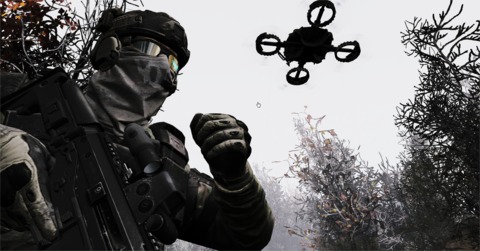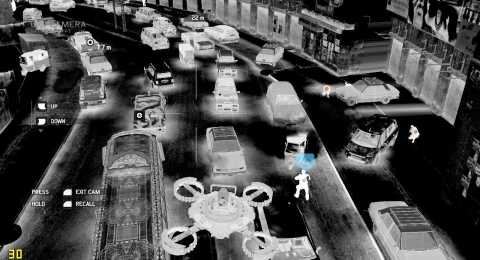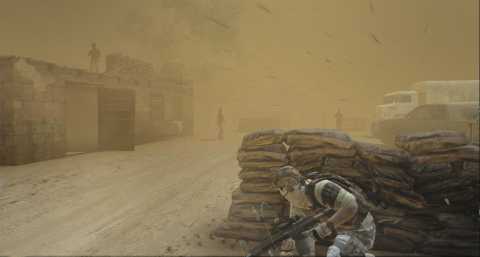
Tom Clancy's Ghost Recon Future Soldier aims to deliver tactical shooter gameplay with a near-future tilt to it. That's not entirely unlike the Advanced Warfighter games that helped kickstart this generation of consoles back in 2006, but GRFS feels like it's trying to be slightly more realistic and slightly less tactical. The end result is a third-person shooter that feels caught between doctrines--it's not tactical enough to feel like a deep, strategic experience yet it punishes run-and-gun tactics just enough to prevent fans of those sorts of games from having a great time, either.
Though just dropping the word Future into the title of a game is enough to evoke images of rayguns and other out-of-reach gadgets, Future Soldier attempts to keep things grounded by focusing on plenty of technology that's already in-the-works, like active camouflage and info-laden HUD units that relay data on enemy positions between soldiers. While most of this stuff isn't seeing wide use on today's battlefields--making the "future" designator entirely accurate--it's hard to get excited about tech that's already prevalent in plenty of other video games. Having a fancy HUD might be mind-blowing if you're running through a real-life sandstorm while hunting down enemies, but with the way it's displayed in Future Soldier, it just feels like any other game with any other modern HUD.
From there, the game becomes a cover-based shooter with additional mechanics that give you a distinct upper-hand over the bad guys. These are rolled out to you one mission at a time, so at the beginning you'll start using sensor grenades, which paint enemy targets and show their outlines on your HUD. Later on you'll get access to tiny drones that can fly high above the battlefield and mark targets for the game's "sync shot" ability.

In Future Soldier you roll as a team of four, and when you're not actively engaged in combat, you can tag enemies with the tap of a button. You can then hold that button down or take one of the shots yourself to trigger a synchronized attack from your squad. In missions where you can't raise any alarms, leaving a man standing is enough to send you back to the last checkpoint, so mastering this decidedly easy-to-master maneuver is crucial. It's satisfying, but it's also so intensely powerful that it feels like you're just stepping from one group of guards to the next, figuring out their patterns from a safe position high above the action, and cleaning them out whenever four or fewer guards peel off from the pack. Other missions do let you engage in direct combat with the enemy, and once this is happening, it's pretty easy to just hide behind cover and take your shots, much like any other cover-based shooter.
With the power of the sync shot, the campaign in Future Soldier gets pretty boring. It also has its share of bugs, including one case where I had to restart several times just to get one of my AI associates to actually make his way up to the spot that triggered the next sequence. This can, theoretically, be alleviated by playing the campaign cooperatively. This makes the sync shot function a little less automatic, and forces you to communicate with your squad. That's probably why the game lacks any sort of proper matchmaking for co-op, forcing you to seek out friends that also want to play Future Soldier. That's a sensible decision, but if people want to fumble their way through the game with a bunch of clumsy strangers, they should at least be given the choice. That also extends to the game's wave-based survival mode, called Guerrilla, which has an "open" party setting that seemingly locks down to invite only after you start a game. Either way, you can't get random players into it, which is pretty weak.

The competitive multiplayer, obviously, doesn't have this problem. The main mode in Future Soldier has you rotating between different objectives as the match goes on, sort of like Killzone's multiplayer mode. But most of these involve holding positions to activate EMPs that disrupt the enemy's electronics, holding down spots that become resupply points, taking out VIP targets, and so on. The mode forces players to move around the map, and the relative frailty of a single soldier makes teamwork extremely useful. Some of the tech tricks come into play in the multiplayer, giving you occasional looks at where enemies are located. As you earn experience points, you can unlock a lot of additional weapons and attachments. There's also a basic class system, allowing you to choose lighter characters that have active camo or going for more traditional soldiers. The intel system and the way it paints enemy silhouettes onto your HUD as you and your teammates discover their locations is interesting, but at its core it's a pretty standard cover-based shooting experience, just like the campaign. It's not bad.
Despite its bugs and some awkward presentation issues, Future Soldier, as a whole, isn't a bad game. It ticks all the boxes you'd expect a modern-day shooter to have and achieves most of them with a workmanlike quality that might make for a solid rental if the game didn't utilize an online pass for multiplayer access. But if you're looking for something that throws back to the days when the Tom Clancy name on a box actually meant that something unique was inside, Future Soldier comes up short.